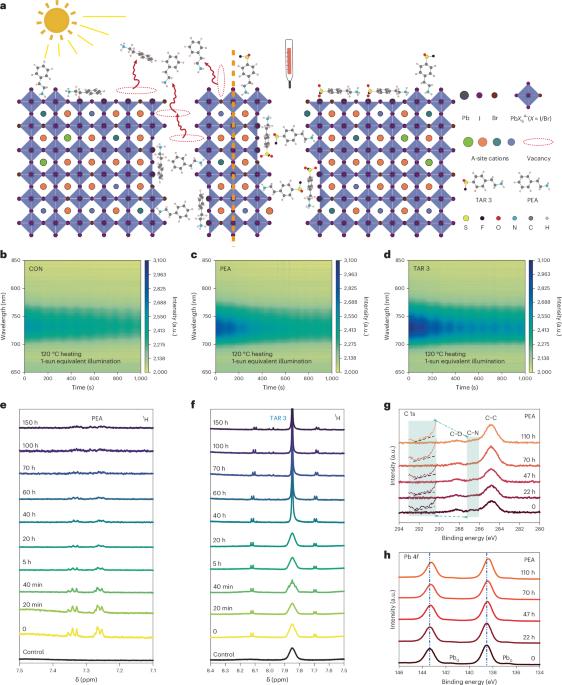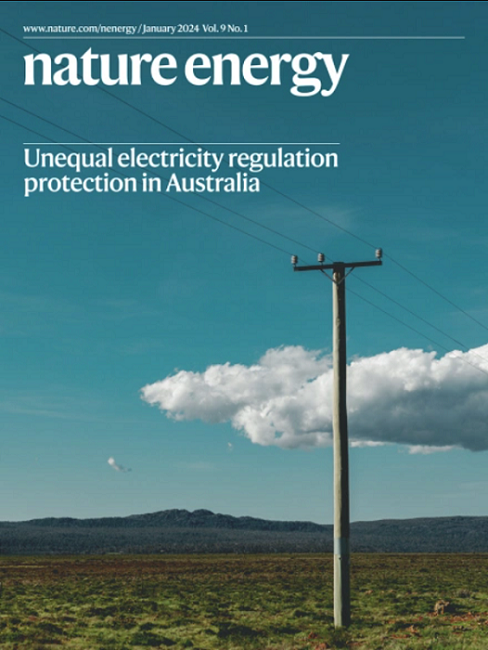抑制钙钛矿缺陷钝化失效的钙钛矿/Cu(in,Ga)Se2单片串联太阳能电池,认证效率27.35%
IF 60.1
1区 材料科学
Q1 ENERGY & FUELS
引用次数: 0
摘要
具有宽带隙钙钛矿和Cu(In,Ga)Se2的薄膜串联太阳能电池有望成为具有成本效益的轻质光伏电池。然而,钙钛矿/Cu(In,Ga)Se2串联太阳能电池的功率转换效率和稳定性尚不能与单结太阳能电池相比,这主要是由于宽带隙钙钛矿中的复合损失和光热诱导降解。在这项研究中,我们表明,由于钝化剂的脱附,钙钛矿钝化的常见策略往往在热和光照联合应力下失败。我们展示了一种强大的钝化剂,它具有精心设计的官能团,可以抑制钝化剂的脱附,而不管钙钛矿表面是否终止,增强了对光热应力的抵抗,并大大抑制了相分离。宽带隙钙钛矿太阳能电池在大约50°C的1个太阳照射下连续工作1000小时后,其功率转换效率达到23.5%,降解可以忽略不计。当集成到钙钛矿/Cu(In,Ga)Se2串联电池中时,它们的稳态功率转换效率达到27.93%(经认证为27.35%),在~38°C的环境空气中稳定运行超过420小时。本文章由计算机程序翻译,如有差异,请以英文原文为准。


Inhibiting defect passivation failure in perovskite for perovskite/Cu(In,Ga)Se2 monolithic tandem solar cells with certified efficiency 27.35%
Thin-film tandem solar cells with wide-bandgap perovskites and Cu(In,Ga)Se2 hold promise for cost-effective lightweight photovoltaics. However, the power conversion efficiency and stability of perovskite/Cu(In,Ga)Se2 tandem solar cells are not yet comparable to single-junction counterparts due to recombination losses and photothermal-induced degradation in wide-bandgap perovskites. In this study, we show that common strategies for perovskite passivation often fail under combined thermal and illumination stresses due to the passivator desorption. We demonstrate a robust passivator with deliberately designed functional groups that inhibits passivator desorption regardless of perovskite surface termination, enhances resistance to photothermal stresses and substantially suppresses phase segregation. The wide-bandgap perovskite solar cells achieved a champion power conversion efficiency of 23.5% with negligible degradation after 1,000 hours of continuous operation under 1-sun illumination at approximately 50 °C. When integrated into perovskite/Cu(In,Ga)Se2 tandem cells, they achieved the steady state power conversion efficiency of 27.93% (certified 27.35%), with stable operation for over 420 hours at ~38 °C in ambient air. Pei et al. overcome desorption of passivating molecules under photothermal stress in wide-bandgap perovskites and achieve perovskite/Cu(In,Ga)Se2 tandem solar cells with a certified efficiency of 27.35%.
求助全文
通过发布文献求助,成功后即可免费获取论文全文。
去求助
来源期刊

Nature Energy
Energy-Energy Engineering and Power Technology
CiteScore
75.10
自引率
1.10%
发文量
193
期刊介绍:
Nature Energy is a monthly, online-only journal committed to showcasing the most impactful research on energy, covering everything from its generation and distribution to the societal implications of energy technologies and policies.
With a focus on exploring all facets of the ongoing energy discourse, Nature Energy delves into topics such as energy generation, storage, distribution, management, and the societal impacts of energy technologies and policies. Emphasizing studies that push the boundaries of knowledge and contribute to the development of next-generation solutions, the journal serves as a platform for the exchange of ideas among stakeholders at the forefront of the energy sector.
Maintaining the hallmark standards of the Nature brand, Nature Energy boasts a dedicated team of professional editors, a rigorous peer-review process, meticulous copy-editing and production, rapid publication times, and editorial independence.
In addition to original research articles, Nature Energy also publishes a range of content types, including Comments, Perspectives, Reviews, News & Views, Features, and Correspondence, covering a diverse array of disciplines relevant to the field of energy.
 求助内容:
求助内容: 应助结果提醒方式:
应助结果提醒方式:


